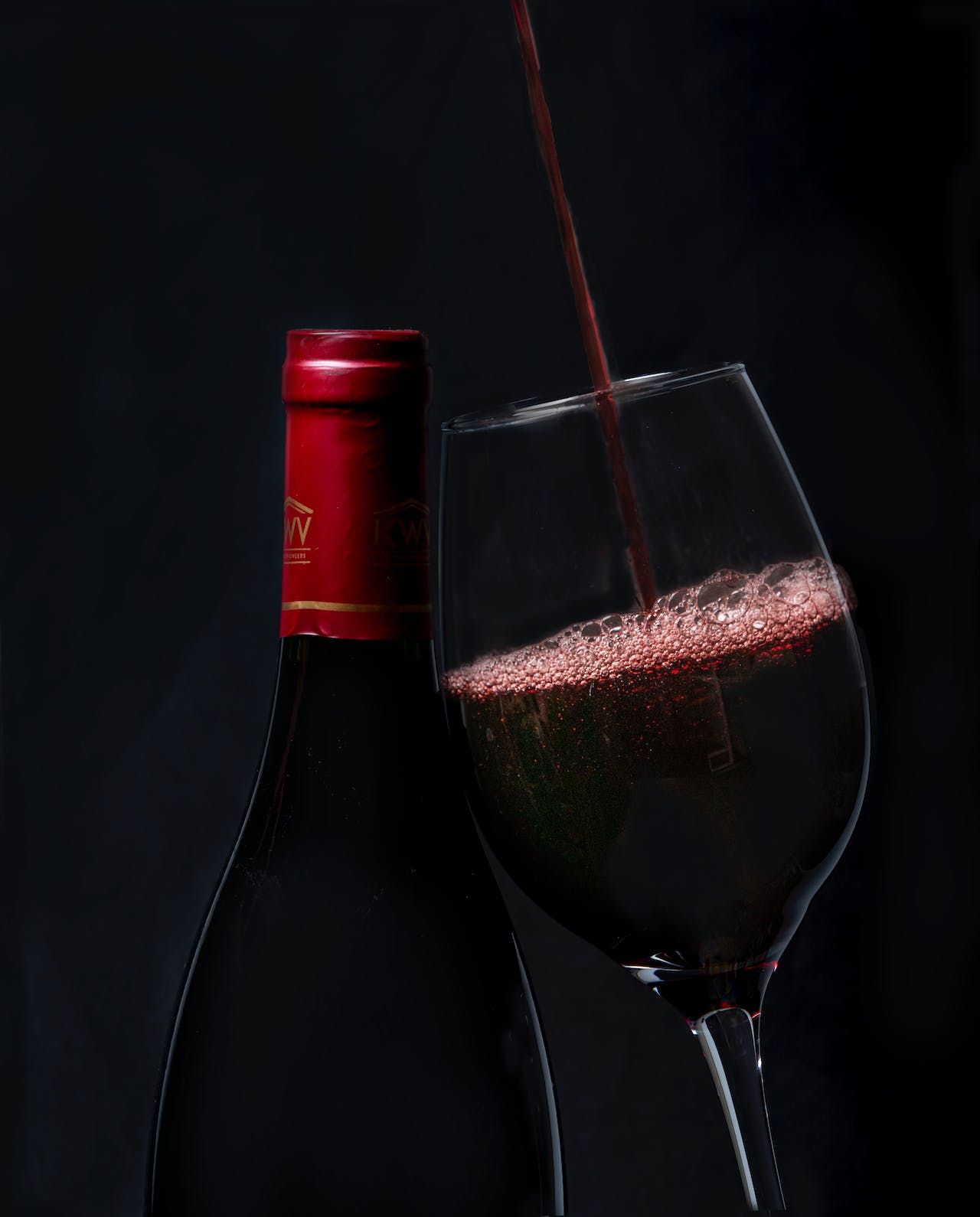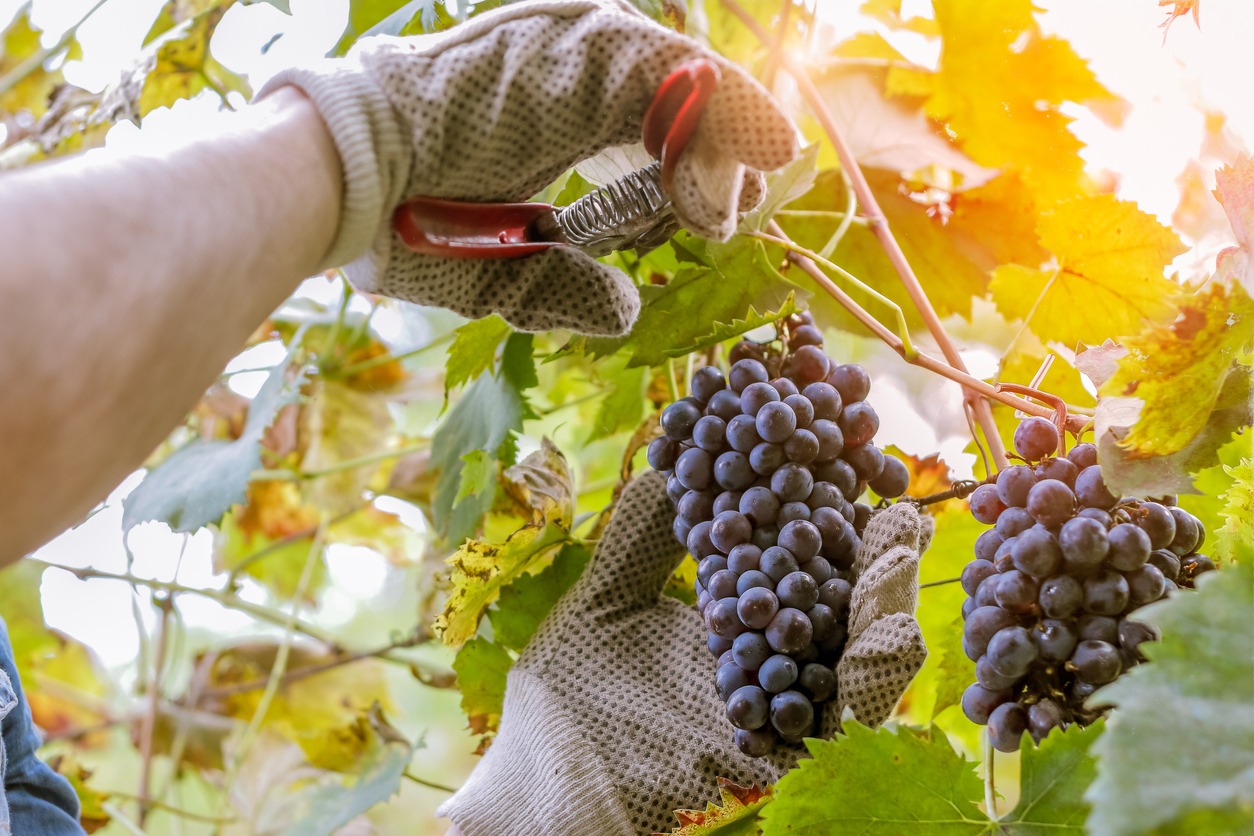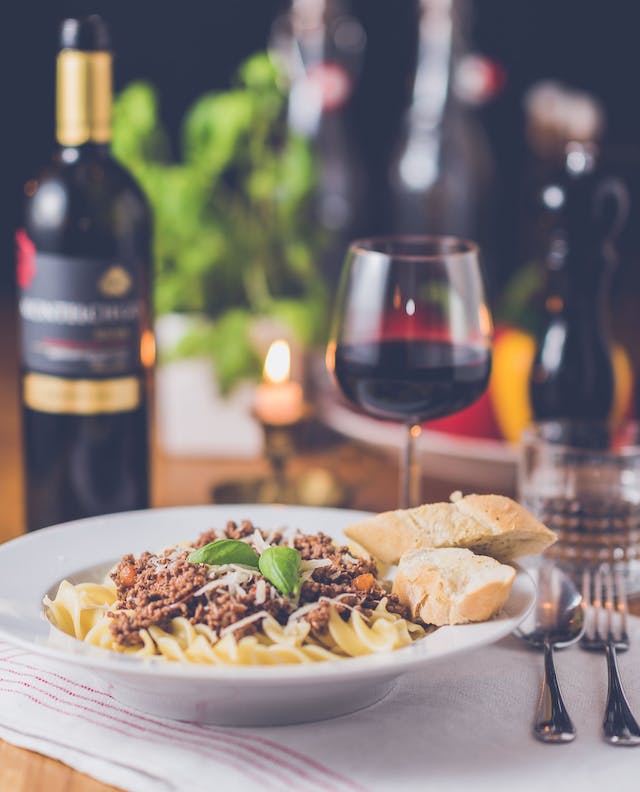Merlot and Cabernet Sauvignon stand as pillars in the realm of popular red wines, each offering distinct profiles that cater to a wide range of palates and preferences. Merlot, with its origins firmly planted in the Bordeaux region of France, has risen to acclaim for its soft, ripe, and elegant characteristics. It typically presents a fruit-forward bouquet, brimming with the aromas of black cherry and blackberry. This varietal tends to have lower tannin levels, which contributes to its smooth mouthfeel and accessibility, especially for those new to red wines.
Cabernet Sauvignon, Merlot’s counterpart, also hails from Bordeaux and is celebrated for its deeper, more structured taste. It is often associated with robust flavors of black currant and layered with nuanced hints of tobacco and pepper. Renowned for its fuller body and higher tannin content, Cabernet Sauvignon boasts an impressive capacity for aging, evolving in complexity over time. The distinctions in color are notable as well, with Cabernet leaning towards a deeper, often darker hue, compared to Merlot’s moderately intense shade.
Understanding the differences between Merlot and Cabernet Sauvignon extends beyond flavor profiles to their cultivation and vinification. Cabernet’s thick-skinned grapes thrive in a variety of climates, yielding a bold flavor that can stand up to extended aging in oak barrels. Merlot grapes, with their thinner skins and earlier ripening, are more sensitive to the environment, which can lead to a wider spectrum of flavors influenced by the terroir. These characteristics significantly influence their presence in blends and single varietal expressions.
Origins and History
Merlot and Cabernet Sauvignon both hail from the Bordeaux region of France, each with its own distinctive influence on wine culture globally.
Bordeaux Beginnings
Bordeaux, France, serves as the birthplace for two of the world’s most renowned grape varieties: Merlot and Cabernet Sauvignon. Merlot has been a key player in Bordeaux’s wine history, with DNA evidence suggesting Cabernet Sauvignon is a progeny of Cabernet Franc and Sauvignon Blanc. This grape likely originated from an accidental crossbreeding in the 17th century.
- Merlot: Traditionally the dominant variety in Bordeaux, particularly in the Right Bank areas.
- Cabernet Sauvignon: Often associated with the Left Bank, where it thrives in the gravel-based soils allowing optimal growth.
Global Expansion
The fame of these grapes has transcended the borders of France, leading to significant cultivation in other parts of the world. The United States, particularly California, has embraced Cabernet Sauvignon, cultivating it widely in regions like Napa Valley. Merlot also enjoys popularity, being grown in both cooler and warmer American climates.
Internationally, both grapes have found new homes with varying degrees of success:
- Australia: Both varieties are cultivated extensively, with regions like Coonawarra known for high-quality Cabernet Sauvignon.
- Italy: Tuscany’s Super Tuscans often blend Cabernet Sauvignon and Merlot with native varieties.
- Chile and Argentina: These South American countries have achieved recognition for their Merlot and Cabernet Sauvignon wines, which often present an excellent value for quality.
- Merlot: Adapts well to various climates, leading to a wide range of wine styles.
As a result of their adaptability and the diverse terroirs they encounter, both Merlot and Cabernet Sauvignon have not only expanded geographically but also in the breadth of styles and expressions available to wine enthusiasts globally.
Wine Characteristics
In exploring the distinct personalities of Merlot and Cabernet Sauvignon wines, one should consider their flavor profiles, the impact of tannin and acidity, and the influence of climate on the grapes.
Flavor Profiles
Merlot typically exhibits a fruit-forward character, with plum and cherry flavors standing out. It’s often seen as more approachable due to its fruity palate. On the other hand, Cabernet Sauvignon is known for its bold flavors, with notes of black currant, leather, and sometimes cedar. The presence of earthy flavors provides a complex tasting experience.
Tannin and Acidity
Cabernet Sauvignon is characterized by its high tannin content, which contributes to its pronounced structure and potential to age well. Its acidity often presents as sharp, adding to the wine’s vibrancy. Merlot, with lower tannins and less acidity compared to Cabernet Sauvignon, tends to offer a softer, smoother feel on the palate.
Climate Influence on Grapes
The grapes’ flavor and structure are greatly influenced by the climate in which they are grown. Merlot grapes tend to thrive in both cool and warm climates, though a warmer climate can produce a bolder Merlot with intensified fruit flavors. Cabernet Sauvignon grapes, on the other hand, generally require a warmer climate to fully ripen, leading to their concentrated fruit flavors and noted tannin structure.
Winemaking and Aging
In the journey from vine to bottle, winemakers employ various techniques to elicit desired flavor profiles in Merlot and Cabernet Sauvignon wines. Specific methods of fermentation, oak aging, and preparation for serving, contribute to each wine’s distinctive character.
Fermentation Process
During fermentation, winemakers carefully monitor the temperature to control the speed of fermentation and the extraction of flavors and colors from the grape skins. Merlot typically undergoes a shorter fermentation at lower temperatures compared to Cabernet Sauvignon. This process preserves Merlot’s fruity characteristics and yields a softer mouthfeel, whereas the extended, warmer fermentation of Cabernet Sauvignon enhances its robust tannin structure and contributes to the variety’s aging potential.
- Merlot Fermentation: Cooler temperatures, shorter duration.
- Cabernet Sauvignon Fermentation: Warmer temperatures, prolonged duration.
Oak Aging and Flavor
Oak aging is paramount in shaping the tasting notes of these wines. Both Merlot and Cabernet Sauvignon are aged in oak barrels, which imparts flavors such as vanilla and chocolate.
- Merlot: Often aged in French oak, which can enhance the wine’s existing fruit flavors and add subtle complexities.
- Cabernet Sauvignon: Regularly benefits from the use of both French and American oak, each contributing different nuances — American oak can add stronger flavors of vanilla and a creamy texture, while French oak might offer more restrained, spicy notes.
Decanting and Serving
Decanting is a vital step for serving age-worthy Cabernet Sauvignon, softening its pronounced tannins and allowing its complex aromas to emerge. A Cabernet may exhibit a longer finish after decanting, revealing layers of flavor that develop with oxidation. Merlot, being generally softer and with less tannin, requires less time to decant, yet it still benefits from the aeration, which can enhance its approachable fruit notes and overall elegance.
- Merlot: Shorter decanting time; accentuates fruit notes.
- Cabernet Sauvignon: Longer decanting time; enhances complexity, tannin structure, and finish.
Food Pairing and Serving
When selecting a wine, the food pairing and method of serving can significantly enhance the dining experience. Here, the focus is on the complementary combinations and serving guidelines for Merlot and Cabernet Sauvignon wines.
Ideal Food Combinations
Merlot is recognized for its softer palate and pairs well with a variety of foods:
- Poultry and Pork: Its subtle fruit notes complement the lighter flavors of these meats.
- Vegetarian Dishes: Dishes that feature mushrooms or root vegetables can accentuate Merlot’s earthy characteristics.
- Cheeses: Soft cheeses, such as brie, can harmonize with Merlot’s mellow tannins.
On the other hand, Cabernet Sauvignon is bolder and its robust tannins marry well with richer, fattier foods:
- Steaks and Red Meats: The high fat content of these dishes balances the astringency of the tannins.
- Heartier Dishes: Stews and braised meats can match the intensity of a Cabernet Sauvignon.
Personal preference plays a significant role in food pairings, and individuals are encouraged to explore different combinations to discover what suits their palate.
Serving Suggestions
For Merlot:
- Temperature: Serve between 60-65°F to highlight its fruit-forward profile.
- Glassware: Use a medium-sized wine glass to concentrate its aromatic subtleties.
For Cabernet Sauvignon:
- Temperature: Best served slightly warmer, between 64-68°F, to allow its complex flavors to unfurl.
- Decanting: Aerating a Cabernet Sauvignon can soften the tannins, enhancing its pairing with a sumptuous steak.
- Glassware: A larger glass with a broad bowl is ideal for swirling and appreciating its full-bodied nature.
By adhering to these specific recommendations, the wine’s inherent characteristics are honored and the synergy with food is maximized.
Choosing the Right Wine
Selecting between Merlot and Cabernet Sauvignon requires understanding their distinct profiles and how regional variations affect their taste. This section will help readers navigate these nuances and make informed choices.
Varietal Characteristics
Merlot often presents a softer, smoother taste with a fruit-forward character, generally perceived as sweeterdue to its fruity flavors. It usually has less tannin, resulting in a plush, approachable body. In contrast, Cabernet Sauvignon has a bolder, more tannic structure, leading to a full-bodied wine with a longer aging potential. It is well-known for its pronounced flavors that include dark fruits, tobacco, and sometimes green pepper.
- Merlot: Softer, Fruit-Forward, Perceived as Sweeter
- Cabernet Sauvignon: Bolder, Tannic, Full-Bodied
Regional Differences
Wines are deeply influenced by the regions in which they are produced. The Bordeaux region stands as their historical birthplace, with the Gironde River dividing it into the Left Bank and Right Bank. The Left Bank is renowned for its Bordeaux blends with a higher proportion of Cabernet Sauvignon, while the Right Bank, with areas like Pomerol, favors Merlot. In the United States, Napa Valley produces Cabernet Sauvignon that rivals its Bordeaux counterparts, while regions like Columbia Valley are known for both varietals with distinct characteristics.
| Region | Merlot | Cabernet Sauvignon |
|---|---|---|
| Bordeaux Left Bank | Less Common, Bordeaux Style Blends | Dominant in Blends, Structurally Complex |
| Bordeaux Right Bank | Dominant, Smoother and Plush | Less Common, Often Blended with Merlot |
| Napa Valley | Fruit-Forward, Soft | Full-Bodied, Bold Flavors |
| Columbia Valley | Balanced, Accessible | Bold but Approachable, Less Tannic |
Investing in Bottles
When investing in either of these wines, a buyer’s budget and preference for wine structure and history are key. Merlot often provides value and is a versatile choice for those not interested in long-term aging. Those with a penchant for wines with a revered reputation and the potential to develop complexity over time might gravitate towards Cabernet Sauvignon. Both varietals have prestigious sibling grapes like Cabernet Franc, Pinot Noir, and Malbec, and they thrive across various wine regions, offering an array of options for collectors and casual drinkers alike. You may also read our article, What Makes Pinot Noir Pricier Than Other Varieties of Wine? to find out more.
| Factor | Merlot | Cabernet Sauvignon |
|---|---|---|
| Investment for Aging | Lower, Shorter Aging | Higher, Longer Potential |
| Budget-Friendly | Often More Accessible | Can Be Pricey |
| Wine Reputation | Approachable, Popular | Prestigious, Celebrated |
Cultivation and Terroir
In the world of viticulture, both Merlot and Cabernet Sauvignon have distinct cultivation needs and thrive in different aspects of terroir. These factors are quintessential in determining the character and flavor profile of the wines produced.
Soil and Geography
Merlot grapes generally prefer a cooler, clay-based soil, which retains more moisture and allows for even ripening. The grape varietal is prominently grown in the Bordeaux region of France, a place known for its optimal soil and topographical conditions that cater to Merlot’s requirements.
Cabernet Sauvignon thrives in gravelly and sandy soil, providing a warmer environment for the grapes and ensuring good drainage. This grape varietal favors regions such as California and Chile, where the soil composition contributes to the grapes’ deep color and concentrated flavors, often yielding notes of cassis, blackberries, and cherries.
Climate Impact on Harvest
The climate plays a crucial role in the cultivation of Merlot and Cabernet Sauvignon. Merlot prospers in regions with moderate climates that allow the grapes to ripen evenly, avoiding the development of too much residual sugar and maintaining a balanced acid profile. The resulting wine is often fruitier, with flavors of plums, raspberry, and subtle hints of blackberry.
In contrast, Cabernet Sauvignon prefers a warmer climate, which contributes to the grape’s robust tannin structure and aging potential. The optimal temperature range for its growth is between 50 and 70 degrees Fahrenheit. The extended sunshine hours in warmer regions help produce a grape with a more intense flavor profile, characterized by dark berries and a substantial tannic backbone.
Final Thoughts
While Merlot and Cabernet Sauvignon are both celebrated red wines with a prestigious status in the world of viticulture, their differences are distinct and noteworthy. Merlot, with its softer, fruitier, and more velvety texture, offers an accessible and versatile option for a wide range of palates and occasions. It’s a wine that complements rather than dominates a meal, making it a favorite for both casual dinners and as an introduction for those new to red wines. On the other hand, Cabernet Sauvignon, known for its bolder, more tannic profile, caters to those who appreciate a more robust and intense wine experience. Its complexity and aging potential make it a staple for collectors and a frequent choice for pairing with rich, hearty meals.
Understanding these differences is key for both wine enthusiasts and casual drinkers alike, as it guides not only personal preference but also food pairing decisions. Whether you lean towards the plush, inviting flavors of Merlot or the structured, deep character of Cabernet Sauvignon, each wine offers its own unique journey of taste and aroma. In the end, the choice between Merlot and Cabernet Sauvignon is not just about selecting a wine, but about choosing an experience that resonates with your palate, your meal, and the moment. As with all aspects of wine, the true beauty lies in the diversity and the personal journey of discovery. So the next time you find yourself perusing the wine aisle, remember these distinctions and embrace the adventure that each bottle holds.




